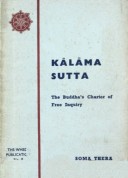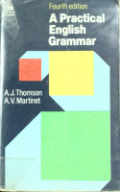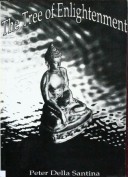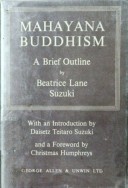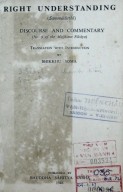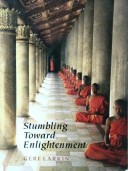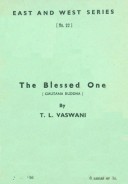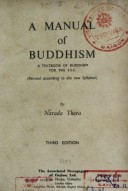Introduction………………..……………1
The Vows of Samantabhadra of the Mahavaipulya Buddha…..……5
Avatamsaka Sutra………………..……5
Appendix (1) ………………..……31
Appendix (2) ………………..……35
Appendix (3) ………………..……37
Notes………………..……39
An Outline of the Pure Land Doctrine
Introduction ………………..……63
Synopsis of the Aparimitayus Sutra………………..……79
A part of the Amitayur Dhyana Sutra
(14th, 15th and 16th Meditations) ………………..……91
The Sukhavati-Vyuha………………..……103
Appendix………………..……111
Addendum—An explanatory note of the ten Chinese Buddhist Sects………………..……113
INTRODUCTION
The above title is an abridgement of the original, which in its entirety reads: “On Entering into the Inconceivable States of Emancipation, by the Practice and Vows of the Bodhisattva1 Samantabhara of the Mahavaipulya Buddha Avatamsaka Sutra”.
This is the third part of the thirty-ninth chapter, (This chapter alone has forty volumes, and this is Its fortieth volume), and is the supplement to the eighty volumes of the version of the T’ang Dynasty, known as the extra one, or rather the last volume of this Sutra. The original text of the supplement was presented to the Emperor Teh-Tsung of the T’ang Dynasty, by the King of Odra in Southern India.
The Emperor Tch-Tsung directed an Indian samana named Prajna, to translate it from the “Sanskrit into Chinese. The work of translation was begun in the 12th year of the Era Chen-Yuan” in the reign of the said Emperor (796 C.E.)
The Avatamsaka Sutra is recognized by all Buddhists as the King of all sutras by its vast and comprehensive synthesizing of all the threads in the web of the Dharma (Law of the universe). Its thirty-ninth chapter, narrating the Vows of Samantabhadra, is the essence of the Mahayana teaching of the whole sutra. At first sight its narration appears easily understandable, but if one reads the numerous commentaries on this sutra, written by various Buddhist savants, one finds that it has a profoundly of meaning wholly unrealized by the literal-minded. Moreover, this chapter is divided into three sections, the first and the second parts containing more subtle meanings that are not easily to be understood. Also there is the holy scene of striking beauty, wherein is portrayed in a most inconceivable manner, how the Kumara Sudnana entered into the state of Samadhi and saw the innumerable shining Buddha-lands as well as the glorious figure of the Bodhisattva Samantabhadra. In Chinese Buddhist circles, only the final part (the present version) is used for practising and reciting.
The metaphysical conception is certainly quite impossible to express in a completely satisfactory manner, either in speech or writing and is especially so in translation, its profound meaning can be entirely lost by even the slightest misinterpretation. I fully realized my incompetence in undertaking this work, for neither my learning of Buddhism nor my linguistic knowledge entitle me to meet such a difficult task. However, having thoroughly impressed this chapter upon my mind by daily recitation over a considerable period of time, I am intuitively inspired to attempt a translation of it I hope that later on if time permits, I may re-write this version, giving a more accurate translation of it when my studies are more advanced.
Among the many wondrous and beautiful things of this universe, Buddhist literature stands supreme; but the very short and simple phrases of its translations, typical of Chinese classical literature, has made the meaning rather incomplete to a foreign reader; and even to a native of China, if he is not conversant with the ancient classical Chinese literature, may fail to grasp their profound significance. I therefore have taken the liberty of adding words to certain sentences which perhaps not be entirely clear in meaning to my readers. These additional words are inserted in parenthesis.
The Sanskrit terms are now quite popular amongst many European Buddhists, who perhaps possess a deeper knowledge of them than I have. In order however to aid beginners, I append some notes on the Sanskrit terms appearing in this version; and also some explanations on certain knotty-points which may perplex the readers, are to be found at the end of this book. These notes, are chiefly based on the Chinese Buddhist Dictionary, (Edited by Dr. F. P. Ting), and partly taken from traditional teachings, (Both European and Chinese), may not be technically accurate, but they are popular explanations among Buddhists.
It is inevitable that Buddhist nomenclature should be different from the typical form of English writing. Even when a new science is formulated, there must be some new terms introduced to meet its requirements. This is particularly true of Buddhism, because it tells of Buddha-states, the very nature of which is well-nigh inconceivable and certainly is beyond the mental power of ordinary minds and which, therefore, no already-formed language can adequately describe. For this reason, it is necessary, If Buddhist truth be represented with accuracy, or nearly, that some new terms must be introduced, and which should not be bound by the typical form of English writing. It is my hope that this suggestion may be adopted by the European Buddhists in the near future.
The stanzas in the text are originally sixty-two verses, each verse consisting of four sentences, and each sentence composed of seven words, which should be rendered into poetical form, and in rhyme. Owing to the difficulties in translating, and lest the meaning should be lost if the words were bound by rhythm, I have translated them literally. I truly regret my failure in reproducing the melodious beauty of the text.
The “Vows of Samantabhadra” is also known as one of the “Four Sutras of the Pure Land School”. The other three being:
(1) The Larger Sukhavati-Vyuha, translated from the Sanscrit into English by F. Max Miiller.
(2) The Smaller Sukhavati-Vyuha, also translated by Max Muller.
(3) The Amitayur-Dhyana-Sutra, Translated into English By J. Takakusa.
These are all contained in volume 49 of the “Sacred Books of the East” published by the Oxford University Press, London.
The chapter of the Vows of Samantabhadra has stood alone without an English version during such a long interval since it was translated from Sanscrit into Chinese about eleven hundred years ago. Now the attempt of the present work has been made, and thereby the English translations of these “Four Sutras of the Pure Land School” are completed.
 Facebook
Facebook
 Google
Google
 Google+
Google+

